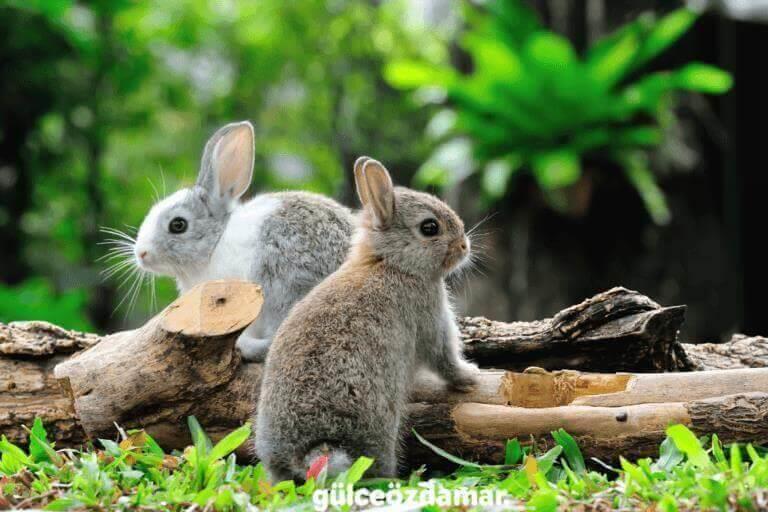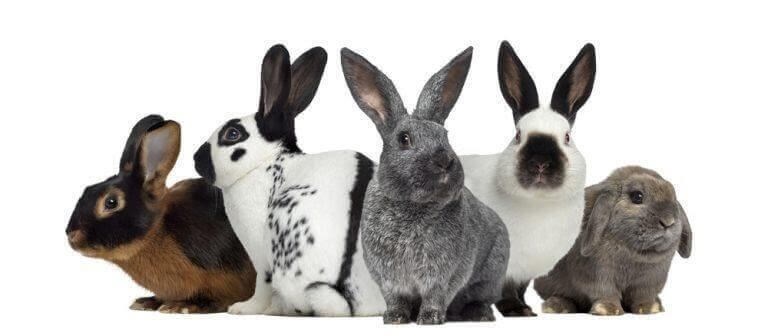Rabbits are very humane creatures that radiate happiness when cared for properly. When not cared for properly, they can be quite aggressive and vicious. In this article, I will talk in detail about the care and behavior of rabbits in the home and garden environment. If you read my other article, you will see that rabbit care is very similar in general terms.

Rabbit Care
As for the nutrition of rabbits, they have a pretty sensitive digestive system. Most rabbit deaths at a young age are due to diarrhea. The most important nutrient that should be constantly included in the diet of rabbits is dry grass. Small amounts of dry clover, hay, and meadow grass should always be in front of rabbits.
Care should be taken to ensure that the herb given is of good quality and freshly dried. I recommend buying from a trusted source, as stale or moldy grass can make your rabbit sick. In addition to regular hay consumption, care should be taken to consume vegetables, fruits, and greens to meet the need for carbohydrates, pellet feed, and necessary protein vitamins. Rabbit's water needs are quite high, like those of every living thing.
They can consume up to one liter of water, especially in the summer. If rabbits cannot find fresh water, they can reduce their water consumption. For this reason, drinkers produced in accordance with the nature of rabbits should be in the cage. Likewise, a rabbit whose toilet is not cleaned daily will start to poop around and ignore the toilet training. In situations like these, it's important to remember how meticulous rabbits actually are.
Rabbits, like rodents, have teeth that are constantly growing. Rabbits kept at home need different toys since they cannot gnaw on hard foods such as tree bark and twigs. Wooden gnawing toys and clean tree branches will work very well in this regard. However, I do not recommend the grinding stones sold in pet shops because the stones are both harmful due to the paint on their surfaces and are not used by most rabbits. If the rabbit has no toys in front of him to gnaw on, he will tend to gnaw on household items. The teeth of the rabbit whose chewing behavior is inhibited grow undesirably and may result in death.
How to Care for the Feathers in Rabbits?
Rabbits should be regularly combed, also they don't need to be bathed. A rabbit immersed in water can experience a sudden shock. However, in cases such as using the wrong shampoo and drying the rabbit with a hair dryer, rabbits can get serious diseases, and sudden deaths become quite possible. Depending on the hair type of the rabbits, there are differences in the type of comb and the combing time.
Trimming the fur of long and thick-haired rabbits helps to minimize the formation of lint in the rabbit's fur and to achieve brighter fur. Of course, by trimming, we only mean shortening the feathers, and both the feather and mental health of the rabbit will be adversely affected. In short-haired rabbits, combing should be done at least once a week with short and soft-tipped combs. You can find the video about rabbit hair care below.
https://www.youtube.com/watch?v=hL78-fmflWE\
How is rabbit toilet training done at home?
Rabbits defecate 300–400 times a day. In order for them to defecate, one food must push the other food. This is why they eat so much. This is also why they defecate while eating. If you notice, the place where rabbits poop the most is the place where they eat their food and its surroundings. The reason for eating one of the 300 poop samples is that the bacteria that help to keep the B and K vitamins are not present in the rabbits and are directly excreted.
The term cecotrope is used to describe this poop. Cecotrope feces contain foods that the rabbit cannot digest. This stool is thrown out by passing through the cecum without passing through the large intestine. This movement, which is mostly done every other day, is called coprophagy and is observed in many living things. You can continue to follow my blog for detailed information about cecotrope feces and coprophagy! Even though it may seem difficult to give rabbits toilet training, it is a training that you can easily get results from when applied correctly. During toilet training, you can follow these steps:
- Get an open litter box for cats or a medium-sized bowl.
- Get sawdust or pine pellets to use as a toilet mat. I do not recommend using cat litter or toilet paper. Cat litter is particularly harmful to rabbits.
- Wait for your rabbit to pee for a while.
- Immediately after peeing, remove the pee with the help of a dry cloth or tissue. When he pooped, collect it from the area and pour it into the toilet bowl.
- Place the soggy cloth on the bottom of the container. Lay the toilet mat you are using on it. In this case, it is very important that the toilet mat is odorless. If the smell of pee is suppressed in the litter box or mixed with different odors, your rabbit may have trouble toilet training.
- Keep repeating these steps until your rabbit is toilet-trained. Compared to pee training, poop training is a longer-term process. For this, I also recommend that you be patient; the more patient you are, the better results you will get. If your rabbit is stubbornly having trouble getting toilet training, you can restrict space until the training process is complete.

Meaning of Rabbit Behaviors
By nature, rabbits are timid, cheerful, intelligent, and friendly. The reason most people say rabbits are not friendly is because they don't communicate properly with them. Knowing about rabbit behavior will strengthen your communication with your rabbit. Here are some rabbit behaviors and their meanings.
- If your rabbit stands up and wiggles his nose, it means there are things around him that interest him. They often get up and look around in situations such as different smells or different people being in the room. Rabbits also stand up when they want to explore the environment. For example, when there is a place they want to jump, they stand up and observe where they will jump.
- If your rabbit is constantly touching you, it may be trying to get to know you, inviting you to play, or seeking attention.
- If your rabbit licks you, it may be a mineral deficiency. Sometimes rabbits lick their owners as a sign of affection.
- If your rabbit bites you, it may be angry with you, or the smell of food on your hand may have attracted his attention. Rabbits do this behavior consciously when they are scared or angry.
- If your rabbit is on your lap, it may be asking for attention or food.
- If your rabbits are grinding their teeth, they do it when they like something, are angry, or have a sore spot.
- If your rabbit is laying their head down, this is the position best suited for petting.
- If your rabbit purrs like a cat, rabbits grunt when they are in pain. They can also make sounds when they are very happy.
- If your rabbit is screaming, rabbits will make a high-pitched sound when they are in serious danger, when they are extremely frightened, and at the time of death.
- If your rabbit is rubbing its chin, they want to leave a scent on things by using the sweat glands under their chin.
- If your rabbit is constantly avoiding you and is irritable, it may have entered a period of anger.